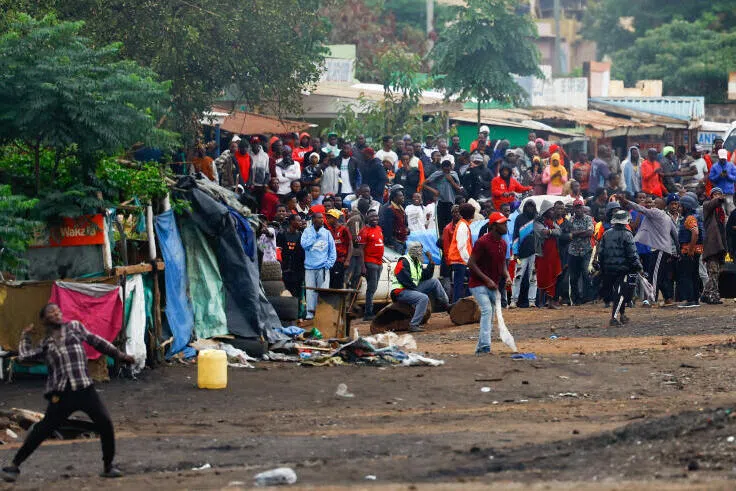Tanzania opposition says hundreds killed in vote protests
Sign up now: Get ST's newsletters delivered to your inbox

Demonstrators protesting the exclusion of two leading opposition candidates from elections in Namanga, Kenya, on Oct 30.
PHOTO: REUTERS
Follow topic:
TANZANIA – Tanzania’s main opposition party said on Oct 31 hundreds of people had been killed in protests over elections across the country this week, as the government said it was restoring order after “isolated incidents”.
The United Nations said credible reports indicated at least 10 people were killed in protests in three cities, the first public estimate of any fatalities by an international body since the vote on Oct 29.
The government has not released any estimates on casualties or responded to requests for comment. Reuters could not independently verify the figures.
Protesters have taken to the streets since Oct 29, angered by the exclusion of Tanzanian President Samia Suluhu Hassan’s two biggest challengers from the race and what they described as widespread repression.
Witnesses have said police fired tear gas and gunshots to break up some demonstrations.
Police have imposed an overnight curfew in the commercial capital Dar es Salaam over the past two nights after government offices and other buildings were set ablaze.
Internet access has been disrupted since Oct 29.
Heavy security presence
Military and police patrolled the streets of Dar es Salaam on Oct 31, preventing people from moving around without a valid reason. The government extended a work-from-home order to civil servants.
Mr John Kitoka – a spokesman for the CHADEMA party which was barred from the election for refusing to sign a code of conduct and had its leader arrested for treason in April – said the party had documented about 700 deaths since Oct 29 based on accounts from health workers.
He said protests continued on Oct 31 in several cities, although they had waned in some due to the heavy security deployment.
“We are calling for the protests to continue until our demands for electoral reforms are made,” he told Reuters.
The unrest presents a test for Ms Hassan, who won praise after taking office in 2021 for easing repression but has more recently faced criticism from opposition parties and activists after a series of arrests and alleged abductions of opponents.
Ms Hassan has denied allegations of widespread rights abuses. She said in 2024 she had ordered an investigation into reports of abductions, but no official findings have been released.
The electoral commission began announcing provisional election results on Oct 30, which showed Ms Hassan winning commanding majorities in a number of constituencies.
Government: ‘Normalcy will return’
Her government issued its first comments directly addressing the unrest on Oct 31 in a message from the foreign affairs ministry to diplomatic missions broadcast on state television.
The message said that, “owing to isolated incidents of breaching to law and order, the government has heightened security and taken several other precautionary measures.
“The security measures in place are temporary but necessary and normalcy will return shortly,” it added.
In Geneva, UN human rights spokesman Seif Magango told reporters there were credible reports of at least 10 people killed in Dar es Salaam, Shinyanga and Morogoro.
He called on security forces “to refrain from using unnecessary or disproportionate force”, and urged protesters to be peaceful.
One Dar es Salaam resident, who asked not to be named for safety reasons, told Reuters a family member had been shot dead outside a hospital when he was mistaken for a protester.
A police spokesperson did not respond to requests for comment.
In a statement on Oct 30, the chair of the European Parliament’s committee on foreign affairs and two colleagues called the elections a “fraud”, saying they “unfolded in an atmosphere of repression, intimidation, and fear”. REUTERS

